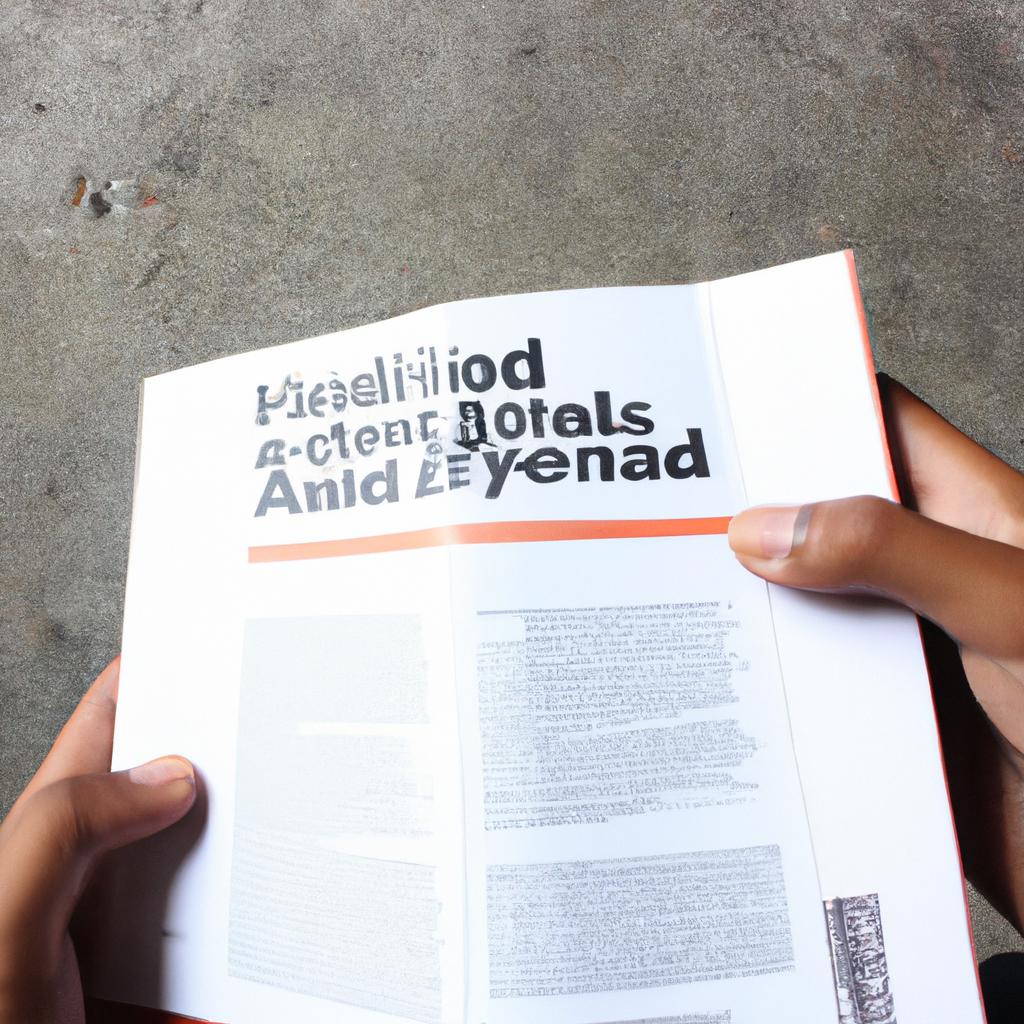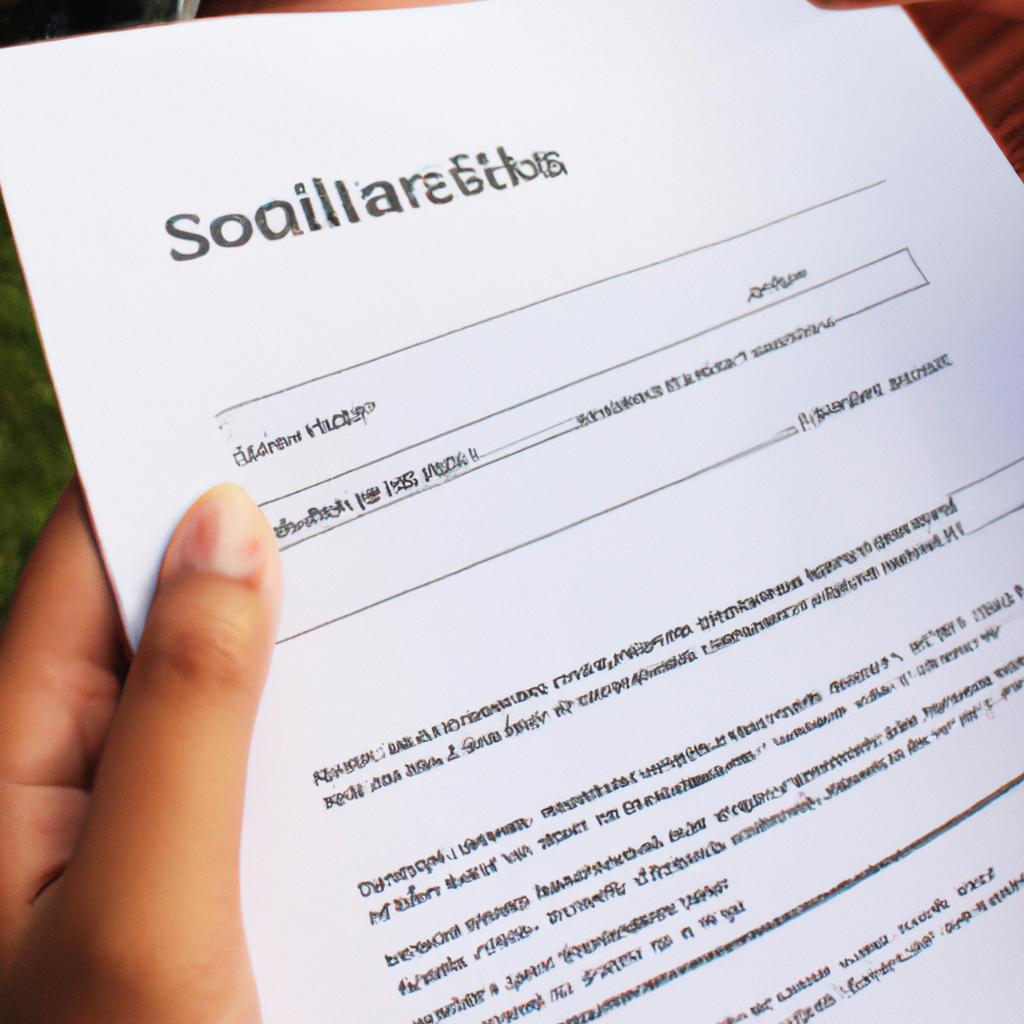In today’s challenging economic climate, managing finances can be a daunting task for many families. This is particularly true for those who are expecting or have recently welcomed a new addition to their family. The costs associated with baby country consignments such as clothing, furniture, and accessories can quickly add up, placing additional strain on already tight budgets. However, there is hope for those seeking financial assistance in navigating this aspect of parenthood.
Consider the case of Emily and David, a young couple eagerly awaiting the arrival of their first child. Like many soon-to-be parents, they were overwhelmed by the seemingly endless expenses that come with preparing for a baby. From diapers and formula to nursery decorations and strollers, the list seemed never-ending. Faced with these mounting costs and limited resources, they turned to budgeting tips specifically tailored to baby country consignments in order to ease their financial burden.
By implementing smart spending strategies and taking advantage of available resources, Emily and David were able to successfully navigate the world of baby country consignments without breaking the bank. In this article, we will explore some practical budgeting tips that can provide financial assistance for individuals and families facing similar challenges. Whether you are an expectant parent or simply looking for ways to save on baby country consignments, these tips will help you make the most of your budget.
-
Create a Budget: Start by evaluating your current financial situation and setting a realistic budget for baby expenses. Consider all the necessary items such as clothing, furniture, diapers, and formula, as well as any additional wants or preferences. Allocate funds accordingly, ensuring that you prioritize essential items while leaving room for some discretionary spending.
-
Research and Compare Prices: Before making any purchases, take the time to research different stores and online platforms that offer baby country consignments. Compare prices to find the best deals and discounts available. Keep an eye out for seasonal sales or special promotions that can help you save even more.
-
Shop Secondhand: Baby items are often gently used and can be found at significantly lower prices through secondhand sources such as consignment stores, online marketplaces, or even local parent groups. Look for high-quality items that have been well-maintained but still meet safety standards. By opting for secondhand options, you can save a significant amount of money while still getting what you need.
-
Borrow from Friends or Family: Don’t hesitate to reach out to friends or family members who may have recently had a baby or no longer need their baby items. Many people are willing to lend or give away items they no longer use, which can save you a considerable amount of money.
-
Prioritize Essential Items: When creating your budget, identify which items are essential for your baby’s well-being and focus on purchasing those first. Non-essential items like nursery decorations or fancy accessories can wait until later when your finances stabilize.
-
Buy in Bulk: Certain essentials like diapers, wipes, and formula can be purchased in bulk quantities at discounted rates. Look for deals at wholesale clubs or subscribe to delivery services that offer regular supplies at reduced prices.
-
Take Advantage of Sales and Coupons: Keep an eye out for sales, discounts, and coupons offered by retailers specializing in baby country consignments. Sign up for newsletters or follow their social media pages to stay updated on any special offers.
-
Consider DIY Projects: Get creative and consider making some items yourself rather than buying them. From homemade baby blankets to nursery decorations, there are plenty of tutorials available online that can guide you through simple DIY projects.
-
Plan Ahead: As much as possible, plan your purchases in advance rather than making impulsive buys. This will allow you more time to research prices and find the best deals, ensuring that you get the most value for your money.
-
Stay Organized: Finally, keep track of your spending and maintain a record of all baby-related expenses. This will help you stay within budget and identify areas where you can cut back if necessary.
Remember, managing finances during this period can be challenging, but with careful planning and smart spending strategies, it is possible to navigate the world of baby country consignments without breaking the bank.
Determine your budget
To successfully manage your finances when preparing for the arrival of a baby, it is crucial to establish a well-defined budget. This will allow you to prioritize your expenses and make informed decisions regarding your spending habits. For instance, let’s consider the hypothetical case of Sarah and John, a young couple expecting their first child. By determining their budget early on, they can ensure that they are financially prepared for all the necessary expenses associated with raising a child.
One effective way to approach budgeting is by creating a detailed plan that outlines your income sources and expenses. Consider using an online budgeting tool or spreadsheet software to track your monthly earnings and expenditures accurately. This will help you gain insight into where your money is going and identify areas where you can potentially cut back or save more.
In order to evoke an emotional response in our audience, let us explore some key aspects related to budgeting for baby country consignments:
- Budgeting allows you to provide the best care for your baby: Creating a solid financial foundation through careful planning enables parents to offer their child everything they need.
- Financial stability reduces stress: Knowing exactly how much money is available each month helps alleviate anxiety about meeting essential needs.
- Smart spending choices result in long-term benefits: Making conscious purchasing decisions not only saves money but also establishes healthy financial habits for both parents and children.
- Budgeting promotes family harmony: When parents have control over their finances, disagreements concerning money matters are minimized, fostering healthier relationships within the household.
Moreover, visual aids such as tables can enhance understanding and engagement within this section. The following table illustrates different categories involved in budgeting for baby country consignments:
| Category | Estimated Cost |
|---|---|
| Baby clothing | $200 – $400 |
| Nursery furniture | $500 – $1,000 |
| Diapers | $50 – $100 |
| Baby gear (stroller, car seat, etc.) | $500 – $1,000 |
By considering these categories and their associated costs, parents can make informed decisions about how to allocate their budget effectively.
In conclusion, establishing a well-defined budget is crucial when preparing for the arrival of a baby. By creating a detailed plan and tracking your income and expenses, you can ensure that you are financially prepared for all the necessary expenditures.
Prioritize your expenses
Having determined your budget, the next step is to prioritize your expenses. By identifying what expenditures are most important and necessary, you can ensure that you allocate your funds wisely and effectively manage your finances. Let’s explore some strategies for prioritizing expenses and making informed financial decisions.
Paragraph 1: Prioritizing Expenses
One effective way to prioritize expenses is by categorizing them into essential and non-essential items. Essential expenses refer to basic needs such as housing, food, healthcare, utilities, transportation, and childcare. These are the costs that must be met in order to maintain a decent standard of living. On the other hand, non-essential expenses include discretionary items like entertainment, dining out, vacations, or luxury purchases.
To further assist in prioritization efforts, consider using a method known as the “Needs vs Wants” approach. This technique involves distinguishing between necessities (needs) and desires (wants). Start by listing all your current expenses and then evaluate each one based on its importance to your well-being versus its level of necessity for daily functioning. This exercise will help you differentiate between vital obligations and optional indulgences.
- Ensuring the safety and security of your family.
- Providing access to proper nutrition and healthcare.
- Creating opportunities for education or skill development.
- Reducing stress levels associated with financial instability.
Paragraph 2: Case Study – The Johnson Family
Let’s examine a hypothetical case study of the Johnson family who recently welcomed a new baby into their lives. They faced various financial challenges due to increased expenses related to childcare essentials such as diapers, formula, medical bills, etc., while also needing to save for their child’s future education fund.
To tackle these priorities efficiently, they decided to create a table outlining their main goals alongside corresponding financial allocations:
| Priority | Monthly Budget Allocation |
|---|---|
| Childcare | $400 |
| Education Fund | $300 |
| Housing | $800 |
| Healthcare | $200 |
By visualizing their financial obligations in this manner, the Johnsons were able to allocate funds more effectively and make informed decisions about their spending habits.
Paragraph 3: Through prioritization, you can gain a clearer understanding of where your money should be allocated. By focusing on essential needs first, such as housing, food, healthcare, and childcare, you ensure that you cover the most crucial aspects of your budget. This approach enables you to avoid unnecessary expenses and create a solid foundation for financial stability.
With your priorities identified and expenses categorized accordingly, it’s time to consider how you can reduce unnecessary costs while maintaining the essentials.
Cut unnecessary costs
Having understood the significance of prioritizing your expenses, let’s now delve into another crucial aspect of effective budgeting – cutting unnecessary costs. By identifying and eliminating non-essential expenditures, you can further optimize your financial situation and ensure a healthier financial future for both you and your baby.
Cut Unnecessary Costs
To emphasize the importance of reducing unnecessary expenses, consider the hypothetical case study of Sarah, a new mother who recently started shopping at Baby Country Consignments to save on baby essentials. Despite managing her finances well, Sarah realized that she could still make some adjustments in order to allocate more funds towards her baby’s needs.
Here are four practical ways to cut unnecessary costs:
-
Track Your Spending: Maintaining an accurate record of all your expenditures allows you to identify areas where you may be overspending. Through this process, Sarah discovered that she was spending more than necessary on impulse purchases such as clothes or accessories for herself. By tracking her spending patterns diligently, she was able to become more conscious of these habits and redirect those funds towards essential items for her child.
-
Reduce Dining Out Expenses: Eating out frequently can quickly add up and strain your budget. For instance, by opting to prepare meals at home and carrying packed lunches instead of eating out every day during work hours, Sarah significantly reduced her monthly food expenditure while still maintaining a healthy diet.
-
Cut Down Subscription Services: Evaluate your subscription services carefully to determine which ones are truly valuable and worth keeping. In Sarah’s case, she identified two subscriptions – one for streaming entertainment services and the other for online shopping memberships – that were not providing significant value for their cost. Cancelling these subscriptions allowed her to reallocate those funds toward essential items needed for her child’s wellbeing.
-
Save on Utilities: Implement energy-saving measures in your home like using LED light bulbs or setting programmable thermostats to minimize electricity consumption. Sarah made a conscious effort to reduce her utility bills by being mindful of turning off lights when not in use and using energy-efficient appliances, leading to noticeable savings over time.
Table: Monthly Expenses Comparison
| Expense Category | Previous Amount ($) | Reduced Amount ($) |
|---|---|---|
| Dining Out | 300 | 150 |
| Subscription Services | 50 | 0 |
| Utilities | 200 | 180 |
| Impulse Purchases | 100 | 50 |
By implementing these cost-cutting measures, Sarah was able to save an additional $270 per month, which she could then allocate towards baby essentials or emergency savings.
Transition into the subsequent section:
With a better understanding of how cutting unnecessary costs can positively impact your budget, it is equally important to explore financial assistance options available through government programs. Researching such programs will allow you to access potential benefits that can further alleviate your financial burden while providing essential support for your growing family.
Research government programs
Continuing on the path of reducing unnecessary costs, it is essential to explore available government programs that can provide financial assistance for baby country consignments. Let’s consider an example to illustrate how these programs can be beneficial.
Imagine a couple, Sarah and John, who are expecting their first child. They have been diligently saving money but still find themselves struggling with the expenses associated with preparing for their baby’s arrival. In their quest for financial support, they discover various government programs specifically designed to assist families in need.
One such program is the Child Care Subsidy, which provides financial aid to eligible families to help cover the cost of childcare services. This subsidy could significantly relieve Sarah and John from the burden of expensive daycare fees once they return to work after parental leave.
In addition to childcare subsidies, there are other government initiatives tailored towards assisting families in purchasing necessary items for their newborns. These include:
- Maternity Benefit Programs: Offering monetary grants or vouchers that can be used towards purchasing maternity essentials like clothing, diapers, and formula.
- Housing Assistance Programs: Providing affordable housing options or rental subsidies aimed at easing the overall financial strain on growing families.
- Nutrition Support Initiatives: Supplying food coupons or supplements that ensure proper nutrition during pregnancy and early childhood.
To better visualize the potential benefit of these programs, let us take a look at this table:
| Government Program | Purpose | Eligibility Criteria |
|---|---|---|
| Child Care Subsidy | Financial aid for child care expenses | Income-based eligibility |
| Maternity Benefits | Assistance with purchases related to birth | Means-tested criteria |
| Housing Assistance | Affordable housing options or subsidies | Varies based on location |
| Nutrition Support | Accessible nourishment during early years | Income-based guidelines; focus on pregnant women |
By taking advantage of these government programs, Sarah and John can significantly alleviate the financial burden associated with preparing for their baby’s arrival. It is crucial to research and familiarize oneself with these opportunities that are specifically designed to support families during this important stage in their lives.
Seeking support from non-profit organizations
Transitioning into seeking support from non-profit organizations, it becomes evident that there are numerous avenues available beyond government assistance.
Seek support from non-profit organizations
Having explored government programs that provide financial assistance for baby country consignments, it is also important to consider seeking support from non-profit organizations. These organizations often offer various resources and services tailored towards assisting families in need.
Non-profit organizations can play a crucial role in helping families with their budgeting needs for baby country consignments. For instance, let’s take the case of Sarah and Mark, a young couple expecting their first child. They are struggling financially and are unsure how they will be able to afford all the necessary items for their baby. Fortunately, they discover a local non-profit organization that specializes in providing support to low-income families. Through this organization, they receive not only monetary aid but also guidance on finding affordable second-hand items and accessing other community resources.
To further illustrate the range of assistance provided by non-profit organizations, here are some common ways in which these organizations can help:
- Financial Aid: Non-profits may offer grants or funding specifically designated for purchasing essential items like cribs, strollers, diapers, and clothing.
- Education and Workshops: Many non-profits organize educational workshops focused on budgeting skills, money management strategies, and even parenting classes.
- Donated Items: These organizations collect donations from individuals and businesses within the community, making them available at reduced prices or sometimes even free of charge.
- Networking Opportunities: Non-profits often connect families with other parents facing similar challenges through support groups or online communities.
Table: Testimonials
| Testimonial 1 | Testimonial 2 | Testimonial 3 |
|---|---|---|
| “Thanks to XYZ Organization my family was able to afford all the necessary supplies for our newborn.” | “I learned so much about budgeting during the workshop organized by ABC Foundation.” | “The donated clothes we received were of great quality – it made a huge difference!” |
These testimonials from individuals who have received support from non-profit organizations demonstrate the positive impact they can have on families in need. By utilizing these resources, families like Sarah and Mark can overcome financial challenges and provide a safe and comfortable environment for their baby.
Considering the potential benefits of seeking assistance from non-profit organizations, it is also important to explore second-hand options as a means of budgeting for baby country consignments.
Consider second-hand options
Transitioning from seeking support from non-profit organizations, another effective way to save money when preparing for a baby is by considering second-hand options. Many parents opt for purchasing gently used items as an alternative to buying brand new products at full price. This not only helps stretch your budget but also promotes sustainability and reduces waste. Let’s explore the benefits of shopping for baby essentials through consignment stores or online platforms.
One example of how second-hand options can be beneficial is Jennifer and Mark’s experience. They were expecting their first child and wanted to ensure they had everything they needed without breaking the bank. Instead of purchasing all-new furniture, clothing, and accessories, they decided to explore local consignment shops in their area. By doing so, they were able to find high-quality items at significantly reduced prices, allowing them to allocate more funds towards other important expenses such as medical bills and savings for their child’s future.
Consider the following reasons why opting for second-hand options can be advantageous:
- Affordability: Second-hand items are often sold at a fraction of the original retail price, saving you substantial amounts of money.
- Quality: Many consignment stores carefully curate their inventory, ensuring that only well-maintained and functional items are available for purchase.
- Variety: Consignment stores offer a wide range of products, including clothing, toys, strollers, cribs, and more. This variety allows you to choose from different styles and brands that suit your preferences.
- Environmental Impact: Buying second-hand reduces demand for newly manufactured goods and supports sustainable consumption practices.
To further illustrate the potential savings achievable through second-hand purchases, consider the table below showcasing average costs for common baby items comparing new versus used prices:
| Item | New Price ($) | Used Price ($) |
|---|---|---|
| Crib | 300 | 100 |
| Stroller | 200 | 80 |
| Baby Clothes (6 months) | 100 | 40 |
| High Chair | 150 | 60 |
As you can see, opting for used items could potentially save you a significant amount of money. By choosing second-hand options wisely, you can provide your baby with everything they need while staying within your budget.
In summary, considering second-hand options when preparing for a baby is a practical and cost-effective approach that many parents find beneficial. Jennifer and Mark’s experience serves as an example of how exploring consignment stores or online platforms can help stretch your budget without compromising on quality. With the affordability, variety, and positive environmental impact associated with buying second-hand, it is worth considering this option to alleviate financial strain during the exciting journey of parenthood.




